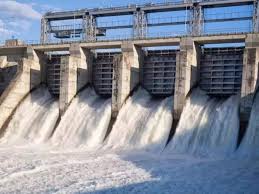
Introduction : hydro schemes
Hydroelectric power has long been celebrated as a clean and renewable energy source, offering a way to generate electricity without the carbon emissions associated with fossil fuels. However, the impact of hydroelectric dams on local ecosystems, particularly on wild salmon populations, has become a growing concern. Recently, these fears have led to increased calls for a pause on new hydroelectric schemes, particularly in regions where wild salmon are a key part of the local ecology and economy. This article explores the concerns surrounding hydro schemes and wild salmon, the arguments for and against pausing these projects, and the potential consequences of such a decision.
Table of Contents
The Importance of Wild Salmon: Ecological and Economic Value
Wild salmon are more than just a species of fish; they are a critical component of many ecosystems and hold significant cultural and economic value. In regions like the Pacific Northwest, wild salmon play a crucial role in maintaining the health of rivers and streams. They contribute nutrients to the ecosystem through their life cycle, supporting a wide range of other species, including bears, eagles, and aquatic life.
Economically, wild salmon are vital to commercial and recreational fishing industries. For Indigenous communities, salmon are a key part of cultural traditions and sustenance. The decline of wild salmon populations due to factors such as overfishing, climate change, and habitat destruction has already raised alarm bells, and the potential impact of hydroelectric dams adds another layer of concern.
The Impact of Hydroelectric Dams on Salmon
Hydroelectric dams can have significant negative impacts on wild salmon populations. Dams disrupt the natural flow of rivers, alter water temperatures, and create barriers to salmon migration. Juvenile salmon, or smolts, often struggle to navigate past dams on their journey to the ocean, while adult salmon face similar challenges when returning upstream to spawn. The turbines used to generate electricity can also pose a direct threat to salmon, causing injury or death.
One of the most significant concerns is the alteration of river habitats. Dams can lead to the loss of spawning and rearing areas for salmon, reducing their reproductive success. Changes in water flow and temperature can also create conditions that are less favorable for salmon, further threatening their populations. For these reasons, many environmentalists and fishery experts have raised concerns about the continued development of hydroelectric projects, particularly in regions where wild salmon are already under pressure.

Recent Developments: Calls for a Moratorium on Hydro Schemes
In response to growing concerns about the impact of hydroelectric dams on wild salmon, there has been a surge in calls for a moratorium on new hydro schemes. Environmental groups, Indigenous leaders, and fishery experts are among those leading the charge, arguing that a pause is necessary to assess the full impact of existing dams and to explore alternative energy solutions that do not threaten wild salmon populations.
The call for a moratorium is particularly strong in areas where wild salmon populations are already in decline. Proponents argue that without a pause, the cumulative impact of multiple hydro schemes could push some salmon populations to the brink of extinction. They also point out that other renewable energy sources, such as wind and solar power, have less direct impact on river ecosystems and could be prioritized instead.
The Counterargument: The Need for Renewable Energy
Opponents of a moratorium on hydro schemes argue that the need for renewable energy is too urgent to put these projects on hold. Hydroelectric power is a reliable and established technology that can provide consistent energy output, unlike solar and wind power, which are more variable. For regions that rely heavily on hydroelectricity, a pause on new projects could create challenges in meeting energy demand and reducing carbon emissions.
Some proponents of hydroelectric power also argue that with careful planning and the implementation of fish-friendly technologies, the impact on wild salmon can be mitigated. Fish ladders, bypass systems, and other engineering solutions have been developed to help salmon navigate dams more safely. Additionally, some hydro schemes are designed to have minimal impact on river ecosystems by using “run-of-river” technologies that do not require large dams or reservoirs.
The Broader Debate: Balancing Energy Needs with Environmental Protection
The debate over hydro schemes and wild salmon is part of a broader conversation about how to balance the need for renewable energy with the protection of natural ecosystems. As the world grapples with the challenges of climate change, the demand for clean energy sources is increasing. However, the push for renewable energy must be carefully managed to avoid unintended consequences, such as the loss of biodiversity.
One potential solution is to conduct more comprehensive environmental impact assessments before approving new hydro schemes. These assessments could take into account the cumulative effects of multiple dams on river ecosystems and identify areas where the risks to wild salmon are too great to proceed. In some cases, it may be possible to retrofit existing dams with fish-friendly technologies rather than building new ones.
Another approach is to prioritize alternative energy sources in regions where hydroelectric power poses a significant threat to wild salmon. Wind and solar power, for example, can be developed in ways that have less impact on aquatic ecosystems. While these technologies are not without their challenges, advances in energy storage and grid management are making it increasingly feasible to rely more heavily on wind and solar power as part of a diversified energy portfolio.

Conclusion: Navigating the Path Forward
The concerns about the impact of hydroelectric dams on wild salmon highlight the complex challenges involved in transitioning to renewable energy. While hydroelectric power offers significant benefits in terms of reducing carbon emissions and providing reliable energy, it also poses serious risks to vulnerable species like wild salmon. The calls for a pause on new hydro schemes reflect a growing recognition that these risks must be carefully weighed against the need for clean energy.









